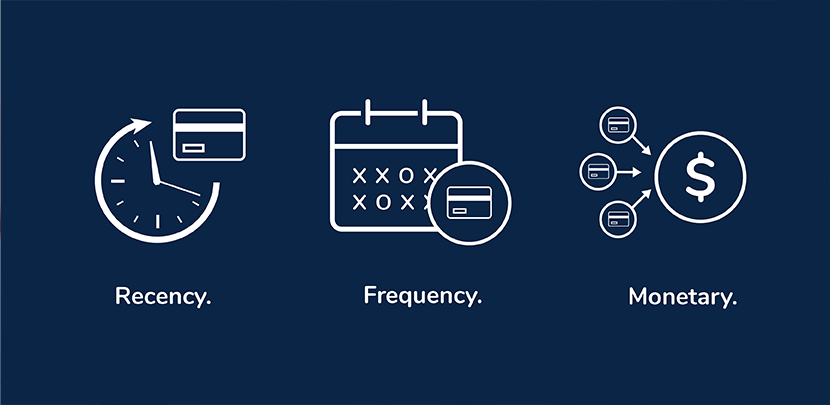Many companies find that 80 per cent of their revenue comes from 20 per cent of their customers—but what does this ‘20 per cent’ look like, and more importantly, how can you segment out these valuable customers in your own business?
Read more: How to track, measure and improve your brand health, our free online guide.
What is RFM modelling?
What makes a customer segment ‘valuable’? Is it how much they spend in a single purchase? Is it how frequently they spend? Or is it those who regularly return to the business, their transactions being the most recent?
Any of these would be valuable metrics in determining how valuable a set of customers is, but valuing based on just a single parameter may result in single-sided insights. A ‘high-value’ customer may only make one large purchase across their entire lifetime, a ‘frequent’ consumer might only spend a few dollars every time they visit, or a ‘recent’ customer may never return.
RFM modelling asks “why not all three?”.

Related content: Get data smart: Your data science 101 guide
How does RFM modelling work?
RFM modelling is a type of customer value modelling that uses your own internal transaction data to prioritise and segment your customers. RFM modelling combines and analyses three pieces of data about your customers:
- Recency, or the period of time since their last purchase.
- Frequency, or the total number of transactions over a given period (or the total number of visits in the case of multiple transactions in a single visit).
- Monetary, or the total value of their purchases.
This data is then assigned a number, usually between 1 to 5. A customer who has purchased in the last week might be given a recency score of 5, while another customer who last purchased six months ago might be given a recency score of 1. The same is done for the other metrics; the higher the frequency/total expenditure, the higher the score.
Note that these scores are all relative. If a business were to have an average customer value of $5,000, they may give customers who spend $10,000 a score of 5, whereas another business whose average is only $500 might give $1,000 values a similar score. It depends on the circumstances and behaviours of your own customers.
Every customer is given their own ‘scorecard’ made up of their recency, frequency and monetary scores. These scores are then used to segment your audience, grouping them by their valuable behaviours (or lack thereof). If the customer doesn’t fit exactly into a segment, then they are placed into the one they best fit into.
Here’s an example of scores and associated segmentations:
|
Recency |
Frequency |
Monetary |
|
|
Champions |
5 |
5 |
5 |
|
Potential loyalists |
2+ |
4 |
4 |
|
New customers |
5 |
1 |
3+ |
|
At-risk customers |
2+ |
4+ |
4+ |
|
Can’t lose them |
1+ |
3+ |
5 |
Related content: 3 achievable traits of great brand data
What does RFM modelling allow you to do?
Identifying customer segments using RFM modelling can help a brand understand and prioritise their most valuable customers. This allows them to develop more effective customer care programmes and marketing activities. It ensures you are always using the right tool for the right audience.
However, it isn’t just about paying more attention to your ‘MVPs’. Discovering the thoughts, feelings and behaviours of the different customer groups can guide a brand to focus on influencing the purchase behaviour that needs influencing. For example, customers in the ‘can’t lose them’ segment may benefit more from a timely sales promotion than the ‘new customers’ group. You may even be able to shift the ‘can’t lose them’ group into the ‘champions’ group by applying the right strategy.
Practical steps you can take to make use of RFM data includes sending customised direct mail promotion offers based on the RFM segments, adding the RFM segments to re-targeting audiences in a DPM for digital advertising, or using the RFM segments as a way to prioritise deeper customer insights research.
Segmentation isn’t just about separating the most valuable customers from the least. It’s about uncovering strategic insights to better tailor and inform marketing, sales and customer experience strategies. RFM modelling has this built into its core methodology, and presents an easy-to-understand framework to encourage more nuanced, personalised strategy.
To see how we've used RFM modelling with a client, read our Burger King App Case Study.
Brand consistency is just one part of a stronger, healthier brand. For more information about owning and improving your brand health, check out our free ebook.
